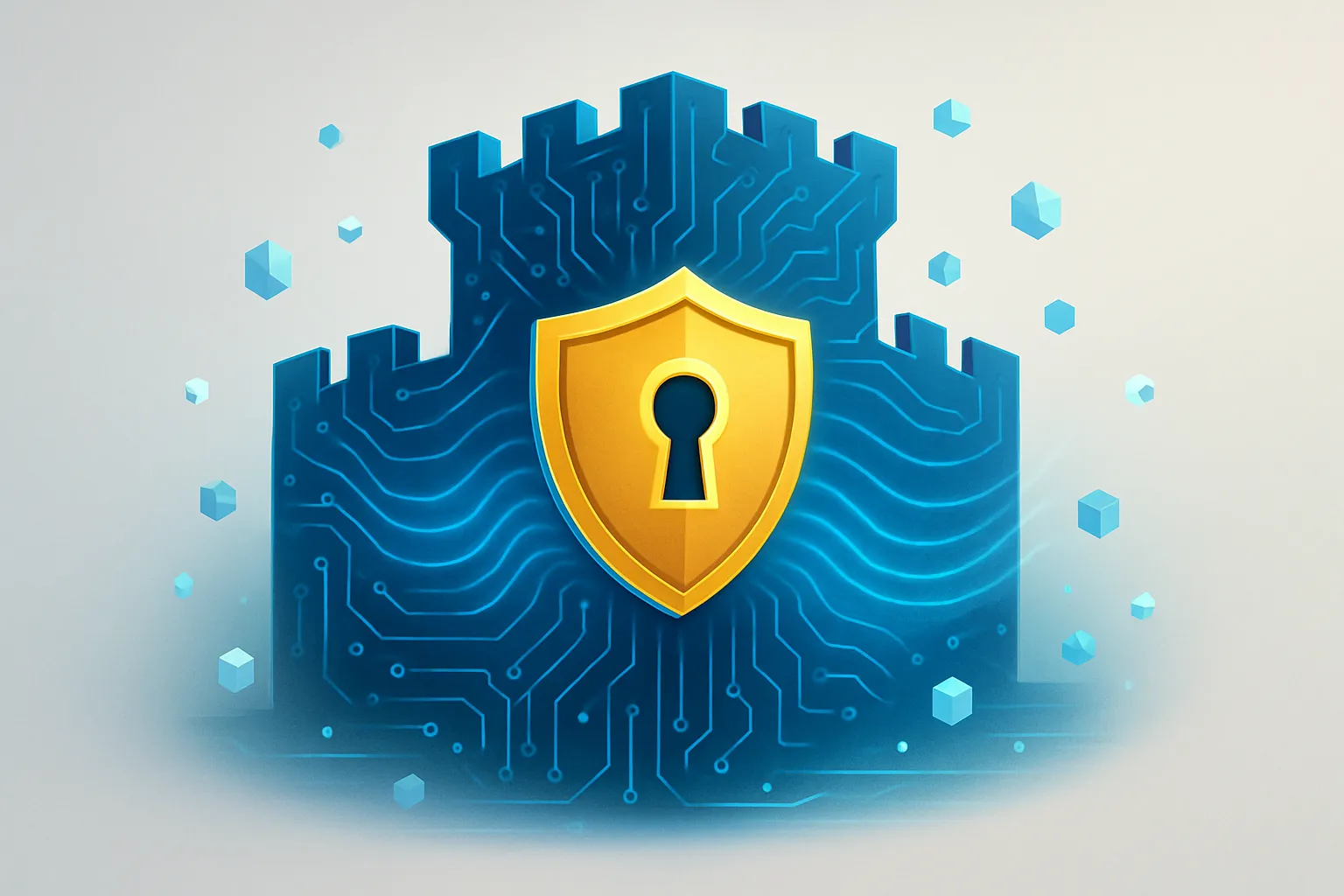Financial fraud poses a significant threat to businesses of all sizes. This article presents expert-backed strategies to safeguard your company’s assets and reputation. By implementing these proven techniques, businesses can create a robust defense against fraudulent activities.
- Embed Security in Development Workflows
- Integrate Fraud Detection into Business Processes
- Treat Urgency as a Red Flag
- Implement Multi-Factor Authentication and Training
- Delay High-Risk Actions for Verification
- Adopt Layered Defense with MDR
- Build a Security-Conscious Culture
- Create a Resilient Multi-Layered Defense
- Invest in Ongoing Security Awareness Training
- Automate Compliance with Real-Time Observability
- Deploy AI-Powered Anomaly Detection System
- Prioritize Security as a Foundational Element
- Minimize Access and Foster Security Culture
- Adhere to Least Privilege Principle
- Implement Role-Based Access and Authentication
- Choose Reliable Payment Partners and Controls
- Train Staff and Monitor Transactions Actively
- Utilize Real-Time Risk Monitoring Tools
Embed Security in Development Workflows
My strategy for protecting businesses from financial fraud and security breaches is grounded in secure-by-design principles and operational discipline.
I led the implementation of least-privilege systems with auditable access across all infrastructure and data layers. Service accounts were dynamically provisioned with narrowly scoped permissions via infrastructure-as-code, ensuring no system or user had broader access than strictly necessary.
I also adopted an event-sourced audit trail for sensitive operations, enabling both traceability and real-time anomaly detection. This gave us early visibility into suspicious behavior (whether external or insider) and helped meet regulatory expectations around data integrity and access control.
Now, in my work as a Fractional CTO, I bring the same mindset to clients: embedding security into development workflows, not layering it on afterward. That includes:
- Enforcing 2FA and strong IAM hygiene across tools and environments
- Using policy-as-code and IaC to codify and version-control security controls
- Running regular threat modeling and recovery exercises as part of standard engineering practices
Ultimately, security isn’t just about compliance or tooling; it’s a cultural and architectural commitment. The earlier you bake it in, the more resilient and trustworthy your platform becomes.
 Raul Tudor
Raul Tudor
Fractional Chief Technology Officer, Tudor Software House
Integrate Fraud Detection into Business Processes
As a fintech specialist, protecting against financial fraud is not just part of my job; it’s at the core of every system I design. One security measure I’ve consistently implemented is embedding fraud detection directly into the business process layer, rather than treating it as a post-event check. For example, in a major financial dispute resolution system I led, we began noticing unusual dispute patterns tied to low-activity accounts and off-hours submission spikes. We integrated behavioral scoring, real-time anomaly detection, and a smart routing engine to flag these cases before they reached resolution teams. That proactive design prevented fraudulent reimbursements and improved fraud response time by over 30%.
In another instance, while modernizing collections workflows, we implemented role-based access controls and real-time audit trails to detect internal misuse and external manipulation. Combined with adaptive risk scoring, the system could adjust follow-up strategies dynamically, flagging high-risk accounts for verification before any transactions were processed.
Across all these efforts, my guiding principle has been zero trust by default, intelligence at every step, and automation with accountability. We’ve layered in data masking, limited access to sensitive information, and enforced multi-level verification for high-risk actions like account changes or payment overrides.
The key lesson I’ve learned? Fraudsters don’t wait, so your systems can’t either. The strongest defense is an intelligent, self-monitoring architecture that learns from user behavior, adapts in real time, and reduces the human error window because in digital finance, speed and accuracy are everything.
 SAI KIRAN NANDIPATI
SAI KIRAN NANDIPATI
Solution Architect, EY
Treat Urgency as a Red Flag
One strategy I’ve adopted to protect my business from fraud is treating urgency as a red flag — especially when money, account access, or credentials are involved. This might sound counterintuitive coming from someone who runs a delivery company, where everything runs on deadlines. But I’ve learned that the very urgency we’re used to can also become the blind spot that fraudsters exploit.
I had a situation early on where someone impersonated one of our vendors and sent a very convincing email asking us to update their banking information “right away” for a pending payment. On the surface, it looked legitimate — same tone, same timing, same vendor name. But what caught my attention was the pressure behind the message. The urgency didn’t feel right. That’s when I realized: most fraud doesn’t succeed because someone hacks your systems — it succeeds because someone pressures your team into skipping verification.
Since then, I’ve trained my staff to slow down when requests come in that feel overly rushed. If something involves money, system changes, or login credentials, and it’s being framed as a “just-do-it-now” type of request, we stop. I make sure we verify those requests through a second, independent channel — even if it looks like it came from me.
This one habit has saved us from more than one close call. And it works because it’s simple: I’ve replaced the instinct to act fast with the discipline to confirm. When things move quickly in business, it’s easy to think pausing will slow you down. But in my experience, that small pause is exactly what protects you.
 Ford Smith
Ford Smith
Founder & CEO, A1 Xpress
Implement Multi-Factor Authentication and Training
Protecting a business from financial fraud and security breaches starts with building a strong culture of vigilance combined with layered security protocols. One key strategy we implemented is multi-factor authentication (MFA) across all financial systems and critical applications. This additional verification step significantly reduces the risk of unauthorized access, even if passwords are compromised.
Beyond MFA, we regularly train our team on recognizing phishing attempts and social engineering tactics, which are common entry points for fraud. We also segregate duties within financial processes to ensure no single individual has unchecked control over transactions, reducing the risk of internal fraud.
Regular audits and real-time transaction monitoring are other crucial components. These help us detect suspicious activity early and respond swiftly.
My best advice for businesses is to combine technology — like MFA and encryption — with ongoing employee education and strict internal controls. This multi-layered approach creates a robust defense that evolves alongside emerging threats.
 Andrew Izrailo
Andrew Izrailo
Senior Corporate and Fiduciary Manager, Astra Trust
Delay High-Risk Actions for Verification
One of my most recommended security measures is the delayed transaction execution with anomaly reconfirmation. For high-risk actions, such as wire transfers, admin privilege escalations, or vendor payments, we use a delayed execution mechanism. If something looks even slightly off (like an unusual time of day, IP address, or behavioral pattern), we delay the action by a few minutes. It requires secondary human verification from a different department.
On the product security front, we employ contextual session validation to protect user accounts. We don’t just trust someone because they logged in once. We keep watching. We check every session for signs that suggest it doesn’t belong, such as unusual devices or behavior. Only the high-risk actions are blocked while low-risk activity continues.
Behind the scenes, we also use a tiered response protocol: suspicious behavior is classified by severity and routed to the appropriate team, ensuring that critical threats get reviewed within minutes. These steps aren’t fancy. They’re just part of how we work now. If you’re starting, focus first on protecting the riskiest transactions, like logins or fund transfers, before securing everything else. That alone can make a real impact.
 Bob Schulte
Bob Schulte
Founder, BrytSoftware LLC
Adopt Layered Defense with MDR
Our strategy for protecting the business from financial fraud and security breaches is grounded in a layered defense model, with a strong emphasis on detection, response, and resilience.
We’ve recently implemented Arctic Wolf MDR, which has been a game-changer in terms of visibility and response. It integrates with our existing log sources — firewalls, endpoint agents, identity providers — and feeds into a 24/7 SOC-as-a-service model. Their Concierge Security Team helps us triage alerts, correlate events, and accelerate incident response. This has significantly reduced our mean time to detect (MTTD) and mean time to respond (MTTR), especially for threats targeting financial systems.
On the identity side, we’ve adopted a Zero Trust model using Microsoft Entra ID with Conditional Access Policies, MFA, and Privileged Identity Management (PIM). All financial systems are behind strict RBAC policies, and we’ve implemented Just-In-Time (JIT) access for elevated roles.
For data protection, we use Microsoft Purview and Mimecast for DLP and data classification, and all sensitive data is encrypted at rest and in transit using AES-256. We also run vulnerability scans, and patching is automated through our endpoint management platform.
On the user side, we run regular phishing simulations and awareness training videos, and we’ve seen measurable improvements in user reporting and click rates.
From a governance standpoint, we’re aligned with NIST and Cyber Essentials Plus.
Ultimately, our goal is to ensure that security is not just a compliance checkbox but a business enabler — especially when it comes to protecting financial integrity and customer trust.
 Deborah Hugill
Deborah Hugill
It Director, Nigel Wright Group
Build a Security-Conscious Culture
In every business I build or advise, I start with one rule on security: treat it like a product, not a checklist. Most breaches I’ve seen don’t happen because someone missed the latest tool. They happen because the basics were ignored.
One thing that’s made a real difference for us is building in a bit of intentional friction anytime money’s moving. No single person can authorize a transfer, and anything over a certain threshold triggers human review. It slows us down by maybe 30 seconds. Totally worth it. We also rotate access credentials quarterly and run internal phishing tests. Not glamorous, but the unsexy stuff is usually what saves you.
Let’s be honest, no system is bulletproof. But if your culture doesn’t take security personally, even the best tools won’t matter.
 Jason Hishmeh
Jason Hishmeh
Entrepreneur, Business & Financial Leader, Author, Cofounder, Increased, Varyence and Get Startup Funding
Create a Resilient Multi-Layered Defense
My strategy for protecting my business from financial fraud and security breaches is built on a layered defense approach that blends technology, people, and processes.
Zero Trust Security Framework – I operate on a “never trust, always verify” model. Every request for access is authenticated, authorized, and continuously validated, regardless of whether it comes from inside or outside the network.
Multi-Factor Authentication (MFA) & Access Controls – All critical systems and financial tools are protected with MFA. I also apply role-based access controls so that employees only access what they absolutely need, reducing insider and lateral movement risks.
Continuous Monitoring & Threat Detection – I use real-time monitoring and alerting to detect unusual activity early. This includes monitoring financial transactions for anomalies and employing security information and event management (SIEM) tools for visibility.
Regular Security Awareness Training – Since people are often the first line of defense, I ensure that my team understands phishing, social engineering, and fraud red flags. Training is not a one-off tick box exercise. It’s ongoing and scenario-based.
Vendor & Third-Party Risk Management – With so many businesses relying on external tools and partners, I vet all third-party vendors for security posture and ensure contracts include data protection and incident response clauses.
Incident Response & Recovery Plan – I maintain a tested incident response plan so if a breach attempt occurs, we can contain, investigate, and recover quickly with minimal disruption. This includes secure data backups and clear communication protocols.
Regular Audits & Compliance Alignment – I routinely audit systems against frameworks like NIST CSF, ISO 27001, and the UK NCSC CAF to ensure we stay compliant and resilient against evolving threats.
At the heart of it, my philosophy is simple: cybersecurity is not all about technology. It’s about creating a resilient culture where every person, process, and system plays a role in defense.
 Chinyelu Karibi-Whyte
Chinyelu Karibi-Whyte
Cyber Security Consultant, Cyb-Uranus Limited
Invest in Ongoing Security Awareness Training
In addition to protecting a company’s information and systems, the personal information of people within the business also needs safeguarding.
The staff within your business are potentially the highest source of security risk due to the level of phishing and malicious emails they are likely to receive, even with robust email security systems in place.
Because of this, we invested in an ongoing security awareness training program.
This program begins with a baseline test email containing standard indicators of fraud or phishing to create an initial score for everyone within the business. From then on, the system regularly emails everyone with the types of messages that can lead to security risks.
These emails can be personalized to your particular industry and made more or less difficult depending on an individual’s or department’s score.
In conjunction with this, there is a program of training videos, tests, and questionnaires explaining exactly what the risks are and how to spot and avoid malicious communication. This training content is tailored to the results of the individual, making it highly personalized.
Also available are more physical tests in the form of strategically placed QR codes in shared office areas or USB drives sent through the post.
Since adopting this system, our teams are much more mindful of the potential risks, and we can see their progression in real time on a weekly basis. In fact, they’re now becoming so adept at detecting potentially fraudulent communication and security risks that the administrators are needing to resort to quite fiendish tactics to stand any chance of catching someone out!
The key here is that it’s an ongoing, personalized service rather than a one-off training course, and it delivers personalized training resources tailored exactly to each individual. This transforms security awareness into an intrinsic part of the business culture in a relatively short time frame.
Training without compliance and engagement is of limited use, but we have found this solution has high levels of engagement as scores are compared between individuals and teams, fostering a sense of healthy competition. The tricky tests that catch people out are discussed during break times, and it feels like this gamification of the training makes it both enjoyable and impactful.
 Joe Earl
Joe Earl
General Manager, Dental Sky Wholesaler Ltd
Automate Compliance with Real-Time Observability
In high-stakes environments like financial services, my strategy for preventing fraud and security breaches centers around “compliance-as-code” with real-time observability. Rather than relying solely on manual reviews or periodic audits, I implement policy-driven automation to continuously enforce security baselines across all cloud and data assets.
One best practice I’ve implemented is deploying Cloud Security Posture Management (CSPM) tools, integrated with custom Sentinel policies and Terraform modules, to detect misconfigurations, enforce encryption, and prevent privilege escalation before they’re exploited. These tools are tightly coupled with identity hygiene practices — such as multi-factor authentication, Just-in-Time access, and least-privilege enforcement across both user and system accounts.
To reduce fraud risk, I’ve also automated alerting for anomalous behavior — like unusual login patterns or data access spikes — feeding into SIEM platforms and triggering incident response playbooks. This minimizes dwell time and helps maintain audit readiness.
Ultimately, the most effective defense is one that’s automated, monitored, and continually evolving, not just compliant on paper. Proactive governance, paired with real-time telemetry, builds both operational resilience and stakeholder trust.
 VEERAVENKATA MARUTHI LAKSHMI GANESH NERELLA
VEERAVENKATA MARUTHI LAKSHMI GANESH NERELLA
Sr. Database Administrator
Deploy AI-Powered Anomaly Detection System
We have implemented a real-time anomaly detection system powered by behavioral analytics and artificial intelligence to protect our company against financial fraud and security breaches. Our system creates dynamic profiles of user behavior and flags activity that deviates from baseline patterns — such as unusual login hours, payment requests outside of normal parameters, or subtle variations in keystroke dynamics — rather than relying solely on conventional security regulations.
We have also segmented our internal network using a zero-trust architecture. This means that even after authentication, devices and users must continuously prove their trustworthiness to access different parts of our system. We integrate this with a decentralized identity framework that uses blockchain for additional verification and audit transparency.
One unique practice we have adopted is running quarterly “Red Team” simulations — ethical hacking exercises designed to expose vulnerabilities from an attacker’s perspective. Insights from these simulations feed directly into our security roadmap.
These advanced, proactive measures allow us to stay ahead of evolving threats, reduce human error, and ensure that both internal operations and client data remain secure.
 Mohit Koshal
Mohit Koshal
Mortgage Broker, Credit Hub
Prioritize Security as a Foundational Element
Any effective security strategy will always prioritize a deep understanding of the business and what to protect based on criticality. This will allow the organization to better design security frameworks, controls, and processes to support it.
We have adopted a multi-layered approach to security, which includes:
- Regular security audits and penetration testing, as well as bug bounty programs to identify vulnerabilities.
- Internal employee training and awareness programs focused on phishing and social engineering.
- Robust incident management and response, allowing for swift action and remediation when a security incident occurs.
- Stringent data security measures, such as encryption of data at rest and in transit as a default standard.
Security is not just a feature; it’s a foundational part of how we operate, evolve, and earn the trust of our partners and users.
 Nareynthiran Pachiappan
Nareynthiran Pachiappan
Director of Security, Coda.co
Minimize Access and Foster Security Culture
We take a proactive approach to security — especially given the sensitivity of the scientific data and IP we work with. One key strategy is minimizing access and surface area: strict role-based permissions, minimal data replication, and secure-by-default infrastructure.
We also audit our workflows regularly and use AI to flag anomalies in internal systems. But the biggest protection? Culture. We train everyone — from engineers to founders — on security awareness and treat it as a shared responsibility, not an afterthought.
Security is not a checklist — it’s a mindset.
 Igor Trunov
Igor Trunov
CEO, Atlantix
Adhere to Least Privilege Principle
One principle we adhere to religiously is the principle of least privilege. Every system, API, wallet, or person only receives access to what they absolutely need — no more, no less. I’ve witnessed too many breaches occur because someone had access “just in case.”
We also rotate keys and credentials on a tight schedule. It’s inconvenient, but so is losing funds.
One best practice that has saved us is the use of hardware wallets with multisig for treasury operations. Even if someone compromises an individual key, they cannot move funds without others signing off. This forces deliberate action, which is exactly what you want when handling client assets.
It’s not flashy, but security never is. The goal is boring reliability. If your system makes hackers yawn, you’re doing it right.
 Ahmed Yousuf
Ahmed Yousuf
SEO Expert & Financial Author, Customers Chain
Implement Role-Based Access and Authentication
With hundreds of vendors and suppliers, protection of our financial accounts is of utmost importance. We take a proactive, layered approach to protecting them from security breaches. One key measure we’ve utilized is strict role-based access across all of our financial systems. No employee has more access than necessary, with specific usage and functionalities. We also require multi-factor authentication on all internal and external accounts. These accounts include banking, CRM, vendor/supplier portals, and more. Additionally, we have hired outside third parties to conduct phishing awareness audits and tests, along with training to keep our team vigilant and up to date with the latest security measures and news.
 Jake Hyten
Jake Hyten
CEO, Superior Supplement Manufacturing
Choose Reliable Payment Partners and Controls
We’ve specialized in fintech, a heavily regulated industry with an exceptionally high risk of security breaches and financial fraud.
There are several security measures and best practices that we help our clients implement, including KYC/AML. These are usually methods that ensure the person you are working with is who they say they are, like biometric authentication, logins, ID verification, etc.
Another popular method we use is embedded finance, where you use a product provided by an expert in the field, who has already placed all the regulatory and security measures in place and refines them constantly. Embedding these products into your platforms comes at some additional cost, but at least you can rest easy knowing all your security needs should be taken care of.
 Alex Kugell
Alex Kugell
CTO, Trio
Train Staff and Monitor Transactions Actively
Our strategy for protecting the business from financial fraud and security breaches starts with choosing reliable, PCI-compliant payment partners. All of our income is processed via secure online transactions, and we’ve partnered with Reddot Payment (Thailand), a trusted and regulated payment gateway known for its strong fraud prevention tools, encryption protocols, and real-time transaction monitoring.
In addition to that, we follow key best practices internally:
1. 2FA (Two-Factor Authentication) is enabled on all financial accounts and admin dashboards.
2. We conduct regular audits of transactions and reconciliation reports.
3. Access to sensitive data is restricted to authorized personnel only.
4. Our website uses HTTPS with an up-to-date SSL certificate to ensure secure customer data transmission.
By combining secure technology partners with internal controls and staff awareness, we’re confident in our ability to safeguard customer payments and business revenue.
 SUNEE KHAMLUE
SUNEE KHAMLUE
Managing Director, Phuket Travel Store
Utilize Real-Time Risk Monitoring Tools
1. Security Measure: Active Transaction Monitoring and Staff Training
We focus on training our team to recognize suspicious behavior and apply extra checks on sensitive actions like account updates and fund transfers. Human oversight remains a key defense.
2. Best Practice: Simple Escalation Process
Having a clear, fast process to escalate anything unusual helps us act before a small issue turns into a major risk. It keeps the whole team aligned on what to do when something doesn’t feel right.
3. Helpful Tip: Use Real-Time Risk Monitoring Tools
A good practice is to use platforms that support real-time monitoring and intelligent alerts. Solutions like ours are built to help with this — making it easier to detect risks early and reduce manual workload.
 Umair Ahmed Qureshi
Umair Ahmed Qureshi
SEO Specialist | Organic Growth Marketer | Content Marketing, FOCAL by Mozn













